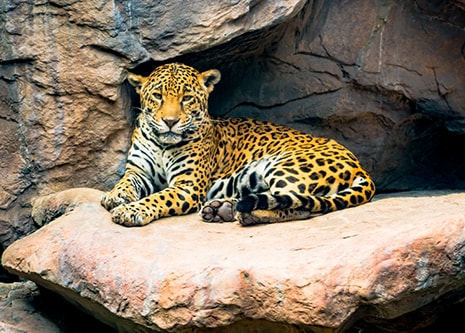
- VisitSupport Happy HollowDONATE TODAYExploreSupport Happy HollowDONATE TODAYLearnSupport Happy HollowDONATE TODAYSupport
-
Today's Hours: 10:00 am to 5:00 pm
Zoo on the HillEclectus parrots

Scientific name: Eclectus roratus
Family: Psittacidae
Order: Psitaaciforms
Class: Aves
Range: New Guinea, the Solomon Islands, and Northeastern Australia
Habitat: Tropical Forest
Lifespan: Average of 30 years in captivityWhat do they look like?
Males are bright green with red sides and blue flight feathers. Their tails are green and blue with dark undersides and yellow tips. They have orange and yellow-colored beaks and reddish orange irises. Females are mostly red with blue or purple chest feathers. They have black beaks and light yellow irises. They are medium-sized parrots, ranging 14 to 17 inches long. Like all parrots, they have zygodactyl feet (they have two toes facing forward and two facing backwards). This type of foot provides them with great dexterity to grasp and manipulate objects, such as food and branches.How do they behave?
Eclectus parrots are particularly intelligent birds. They roost in tree hollows of the tropical rainforests of New Guinea and the surrounding islands. They can live as solitary birds, in bonded pairs, or in small groups of bonded pairs. Females are more territorial than males, especially while nesting.What do they eat?
Eclectus parrots are treetop feeders. They eat fruit, seeds, flowers, berries, leaf buds, and occasionally nuts. At Happy Hollow, they eat specialized parrot food, fruits, seeds, vegetables, and greens.How are they born?
The female eclectus lays two eggs at a time. She will guard and incubate the eggs for approximately 28 days. Chicks hatch blind and nearly naked of all feathers. Until they grow their first down feathers as warmth and protection, the female will stay close to keep them safe. Both parents will feed the chick until it is able to eat on its own. What should you know about them? Eclectus parrots are sexually dimorphic (males and females look different from one another). In fact, the female and male eclectus parrots look so different from one another that they were once thought to be two separate species! In birds, like peacocks, males are usually brighter and bolder in color to impress females. But for eclectus parrots, they’ve switched the roles! Green males blend in well with the forest trees. The red females, however, roost for up to 9 months out of the year in the hollows of trees. The female relies on the male to bring her food and the red coloration helps the male to find her.Conservation
The eclectus parrot’s conservation status is currently listed as Least Concern by the International Union for Conservation of Nature . While eclectus parrots aren’t an endangered species at this time, they are still at risk due to a combination of factors. They face habitat loss through deforestation, and capture from the wild for pet trade. One organization focusing on conservation of eclectus parrot habitat is Solomon Islands Community Conservation Partnership (SICCP). SICCP aims to reduce habitat loss in the Solomon Islands through community based conservation initiatives. You can help eclectus parrots by leaving these beautiful birds in the wild, rather than keeping them as pets. Due to large spatial needs and social interaction, these birds are much better suited for life in the wild. If you are looking for a new pet, check out your local humane society, there you will find people who can help you make the proper pet choice.
Zoo in the Hollow
Follow the crooked bamboo pathway down into the hollow and visit with some of the most amazing animals in the world. Where else in San José can you get up close to a stunning jaguar, lemur, meerkat or American alligator? Happy Hollow is dedicated to helping save species and preserve wildlife for future generations by participating in Species Survival Plan programs through the Association of Zoos and Aquariums.
See Animals
Education Ambassadors
From camps and classes to scout badges and sleepovers, Happy Hollow education programs have something for everyone! The zoo education program offers a broad range of hands-on, engaging programs and public presentations featuring education ambassador animals. These encounters are designed to connect you to wildlife and the conservation of their habitats around the world.
See AnimalsVisit Us Today
Plan an unforgettable experience at San Jose’s family-friendly park and zoo.
Learn More